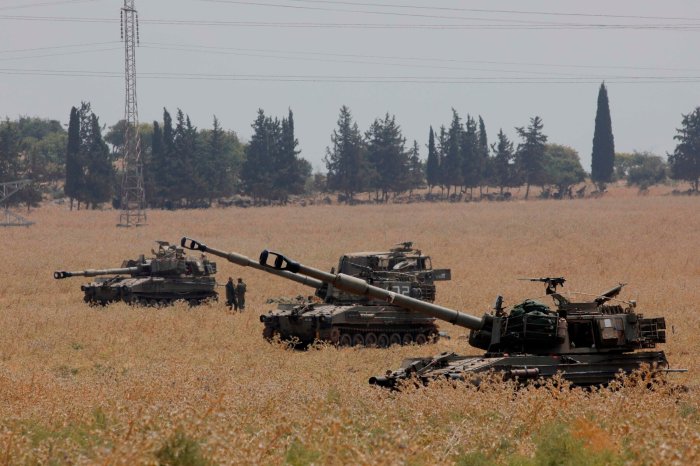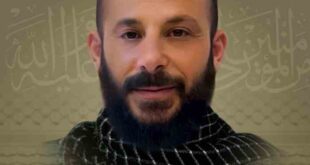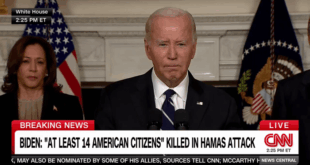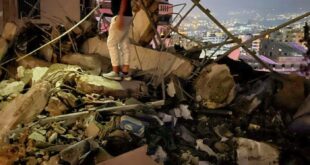What to know about the growing conflict between Israel and Lebanon’s Hezbollah is a complex issue with deep roots in history. The tension between these two nations is a long-standing one, marked by periods of violence and uneasy peace.
This conflict is not simply a regional issue, but one with global implications, as it involves powerful players like Iran, Syria, and the United States.
Understanding the history of this conflict, the key players involved, and the potential for future escalation is crucial to grasping the complexities of the Middle East and the potential for wider regional instability. This article will delve into the history of the conflict, the motivations of the key players, and the challenges to achieving a lasting peace.
Historical Context
The conflict between Israel and Lebanon’s Hezbollah is deeply rooted in a complex and often violent history. Understanding this history is crucial to grasping the current situation and the challenges to achieving a lasting peace.
The Formation of Hezbollah and its Role in the Lebanese Civil War
The Lebanese Civil War (1975-1990) was a brutal and multifaceted conflict, with numerous factions vying for power. Hezbollah, meaning “Party of God,” emerged during this period as a Shi’a Muslim militia backed by Iran. It played a significant role in the war, particularly in the fight against the Israeli-backed South Lebanon Army (SLA) in southern Lebanon.
Hezbollah’s involvement in the civil war was driven by a combination of factors, including:
- Opposition to Israel’s presence in Lebanon:Israel had invaded Lebanon in 1982 and occupied southern Lebanon, which Hezbollah viewed as an illegal occupation. Hezbollah’s goal was to expel Israel from Lebanon and liberate the occupied territories.
- Shi’a empowerment:The Lebanese Civil War was also a struggle for power and representation within Lebanon. Hezbollah’s rise to prominence during the war provided the Shi’a community with a powerful voice and a significant military force.
- Ideological and religious factors:Hezbollah’s ideology is rooted in Shi’a Islam, and it draws inspiration from the Iranian Revolution. Hezbollah’s struggle against Israel is seen as part of a broader Islamic struggle against Western imperialism and oppression.
The Origins of the Israeli-Lebanese Conflict
The Israeli-Lebanese conflict has a long and complex history, dating back to the establishment of the State of Israel in
1948. Key events that have shaped the conflict include
- The 1948 Arab-Israeli War:Following the establishment of Israel, Lebanon was among the Arab states that fought against Israel. While Lebanon did not directly border Israel, the conflict had a significant impact on Lebanon’s political landscape and the formation of Palestinian refugee camps within its territory.
- The 1967 Six-Day War:The 1967 war further escalated tensions between Israel and Lebanon. Israel’s victory in the war led to its control of the Golan Heights, which bordered Lebanon, and the West Bank, which had a significant Palestinian population. This created a new front for conflict between Israel and its Arab neighbors, including Lebanon.
- The 1982 Israeli Invasion of Lebanon:The 1982 invasion was launched by Israel to dismantle the Palestine Liberation Organization (PLO) in Lebanon, which had been operating from there. The invasion led to a prolonged occupation of southern Lebanon, which lasted until 2000. The occupation was met with fierce resistance from Hezbollah, which became a major force in the fight against Israeli occupation.
Key Players and Ideologies
The conflict between Israel and Hezbollah is a complex one with deep roots in the history of the region. Understanding the key players involved and their ideologies is crucial to grasping the dynamics of this conflict. Hezbollah, a powerful Lebanese Shia political party and militant group, plays a central role in this conflict.
Its political and military structure, ideological underpinnings, and influence on Lebanese politics are key factors in shaping the current situation.
Hezbollah’s Political and Military Structure, What to know about the growing conflict between Israel and Lebanon’s Hezbollah
Hezbollah is a highly organized and well-funded group with a complex structure. Its leadership is comprised of a council of religious scholars, known as the Shura Council, which sets the overall strategy and direction of the group. The Secretary-General, currently Hassan Nasrallah, is the figurehead and primary spokesperson for Hezbollah.Hezbollah’s military wing, known as the “Islamic Resistance,” is a formidable force with a significant arsenal of rockets and missiles.
This wing has been responsible for numerous attacks against Israel, including the 2006 Lebanon War.Hezbollah’s funding comes from a variety of sources, including donations from Shia Muslims around the world, particularly in Iran. The group also receives support from the Iranian government, which provides financial aid, training, and weapons.
Hezbollah’s Ideological Underpinnings
Hezbollah’s ideology is rooted in Shia Islam and the concept of “Islamic Resistance” against Israel. The group views Israel as an illegitimate entity occupying Palestinian land and considers its fight against Israel as a religious duty. Hezbollah’s relationship with Iran is deeply intertwined with its ideology.
Iran is considered a key ally and supporter of Hezbollah, providing financial, military, and political backing. Hezbollah’s goals for the region include the liberation of Palestine, the establishment of an Islamic state in Lebanon, and the defeat of Israel.
Hezbollah’s Influence on Lebanese Politics
Hezbollah has a significant presence in Lebanese politics, holding seats in parliament and having a strong influence on the government. The group’s political wing, known as the “Hezbollah Bloc,” has been a major force in Lebanese politics for decades. Hezbollah’s influence extends beyond its political representation, as it is also a powerful social and economic force in Lebanon.
The group provides social services to its supporters, including healthcare, education, and infrastructure projects.
Military Capabilities and Strategies
The conflict between Israel and Hezbollah is characterized by a significant disparity in military capabilities, yet Hezbollah has proven to be a formidable adversary. This section delves into the military strengths and weaknesses of both sides, analyzing Hezbollah’s unique military doctrine and tactics, and exploring the role of Israel’s Iron Dome defense system.
Military Capabilities of Israel and Hezbollah
Israel possesses a highly advanced and technologically sophisticated military, considered one of the most powerful in the Middle East. Its strengths include:
- Air Superiority:Israel boasts a formidable air force with advanced fighter jets, drones, and sophisticated weaponry, giving it a significant advantage in air power.
- Advanced Technology:Israel’s military is equipped with cutting-edge technology, including precision-guided munitions, sophisticated intelligence gathering capabilities, and advanced communication systems.
- Strong Intelligence Network:Israel has a robust intelligence network that provides crucial information on Hezbollah’s activities and intentions.
- Well-Trained Military:Israel’s military is comprised of highly trained and experienced soldiers, with mandatory military service for its citizens.
However, Israel also faces some challenges, including:
- Limited Ground Forces:Despite its overall military strength, Israel’s ground forces are relatively small compared to its other military branches.
- Political Constraints:Israel’s military operations are often subject to political constraints, which can limit its ability to respond decisively to threats.
- Public Opinion:Public opinion in Israel can influence military decision-making, especially in protracted conflicts.
Hezbollah, on the other hand, is a significantly smaller and less technologically advanced force compared to Israel. However, it has proven to be a formidable adversary due to its:
- Guerrilla Warfare Expertise:Hezbollah’s military doctrine is based on asymmetric warfare, utilizing guerrilla tactics, ambushes, and underground tunnels to exploit Israel’s vulnerabilities.
- Large Rocket Arsenal:Hezbollah possesses a vast arsenal of rockets, capable of reaching most parts of Israel, which can inflict significant damage and disrupt daily life.
- Strong Public Support:Hezbollah enjoys significant popular support in Lebanon, providing it with a crucial source of manpower and logistical support.
Hezbollah’s limitations include:
- Limited Conventional Capabilities:Hezbollah lacks the advanced weaponry and technology possessed by Israel, particularly in terms of air power and heavy armor.
- Dependence on External Support:Hezbollah relies heavily on financial and military support from Iran and Syria, making it vulnerable to external pressures and sanctions.
- Limited Operational Space:Hezbollah’s operations are primarily confined to Lebanon, limiting its ability to maneuver and strike deep into Israeli territory.
Hezbollah’s Military Doctrine and Tactics
Hezbollah’s military doctrine is based on the principles of asymmetric warfare, aiming to exploit Israel’s weaknesses and inflict maximum damage with limited resources. Its key tactics include:
- Rocket Attacks:Hezbollah’s primary offensive weapon is its vast arsenal of rockets, which are used to bombard Israeli cities and military installations.
- Guerrilla Warfare:Hezbollah employs guerrilla tactics, such as ambushes, hit-and-run attacks, and the use of improvised explosive devices (IEDs), to target Israeli troops and infrastructure.
- Underground Tunnels:Hezbollah has extensively developed a network of underground tunnels, used for concealment, transportation, and launching attacks.
- Psychological Warfare:Hezbollah utilizes psychological warfare tactics, such as propaganda and threats, to undermine Israeli morale and public support for military operations.
Israel’s Iron Dome Defense System
Israel’s Iron Dome defense system is a crucial element of its defense against Hezbollah’s rocket attacks. It is a multi-layered system that uses radar to detect incoming rockets and launches interceptor missiles to destroy them in mid-air. The system has been remarkably effective in intercepting a high percentage of Hezbollah’s rockets, significantly reducing the number of casualties and damage.
- Effectiveness:Iron Dome has been credited with intercepting a significant percentage of Hezbollah’s rockets, preventing widespread destruction and casualties in Israeli cities.
- Limitations:While effective, Iron Dome is not infallible and has limitations in dealing with rockets that are launched from close range or those with sophisticated guidance systems.
International Implications
The conflict between Israel and Hezbollah has significant implications for regional stability and international relations. It is a complex issue with multiple actors involved, each with their own interests and objectives. Understanding the impact of this conflict on the wider region and the international response is crucial for comprehending its potential consequences.
Impact on Regional Stability
The conflict has a profound impact on regional stability, particularly in the Middle East. Hezbollah, a Lebanese Shiite militia, is backed by Iran, a major regional power. The conflict has the potential to escalate into a wider regional war, drawing in other actors like Syria, which has been deeply involved in the Lebanese civil war and is allied with Hezbollah.The presence of external actors like Iran and Syria further complicates the situation, adding another layer of complexity to the conflict.
Iran’s support for Hezbollah provides it with military and financial resources, while Syria’s involvement in the Lebanese civil war has created a complex web of alliances and rivalries.
International Response
The international community has responded to the conflict in various ways. The United States, Israel’s main ally, has consistently condemned Hezbollah’s actions and has provided Israel with military and financial support. Russia, on the other hand, has closer ties with Syria and has been critical of Israel’s military actions.
The United Nations has called for a peaceful resolution to the conflict and has deployed peacekeeping forces to Lebanon.
- The United States has imposed sanctions on Hezbollah and has designated it as a terrorist organization. It has also provided Israel with advanced weaponry and intelligence to counter Hezbollah’s threat.
- Russia has condemned Israel’s military actions in Lebanon and has called for a de-escalation of the conflict. It has also been involved in mediating between Israel and Hezbollah, but its efforts have been largely unsuccessful.
- The United Nations has called for a ceasefire and has deployed a peacekeeping force to Lebanon (UNIFIL) to monitor the border and prevent further escalation of the conflict.
Potential Consequences of Escalation
A major escalation of the conflict could have devastating consequences for the region and the world. It could lead to a wider regional war involving Israel, Lebanon, Syria, Iran, and potentially other actors. Such a war would have a catastrophic impact on the civilian population and could destabilize the entire region.
“A major escalation of the conflict could have catastrophic consequences for the region and the world.”
The conflict could also lead to a resurgence of sectarian violence in Lebanon, which has a history of religious and political tensions. It could also further destabilize the region, making it more vulnerable to terrorism and extremism.
Prospects for Peace
The possibility of lasting peace between Israel and Hezbollah is a complex and multifaceted issue. While there have been periods of relative calm, the underlying tensions and historical grievances continue to fuel instability in the region. Achieving a durable peace requires addressing the core issues that have driven the conflict, including the status of the Shebaa Farms, Hezbollah’s disarmament, and the broader political landscape.
Obstacles to Peace
The path to peace is fraught with challenges, stemming from the deeply entrenched positions of both sides and the complex political dynamics in the region.
- The Shebaa Farms:This small, disputed territory on the Lebanon-Israel border remains a major point of contention. Hezbollah claims the farms are Lebanese territory occupied by Israel, while Israel maintains that they are part of the Golan Heights, which it captured from Syria in 1967.
The unresolved status of the Shebaa Farms provides Hezbollah with a justification for its continued armed presence in southern Lebanon, as it views it as a legitimate target for attacks against Israel.
- Hezbollah’s Disarmament:The issue of Hezbollah’s disarmament is a major obstacle to peace. The United Nations Security Council Resolution 1701, which ended the 2006 Lebanon War, called for the disarmament of all armed groups in Lebanon, including Hezbollah. However, Hezbollah has refused to disarm, arguing that it needs to maintain its military capabilities to deter Israeli aggression and defend Lebanon’s sovereignty.
- Political Dynamics:The political landscape in both Lebanon and Israel further complicates the prospects for peace. In Lebanon, Hezbollah is a powerful political force with a significant presence in the government. The group’s political influence makes it difficult to implement any agreement that would involve its disarmament or a complete withdrawal from the Shebaa Farms.
In Israel, there is a significant segment of the population that remains skeptical of any peace agreement with Hezbollah, viewing it as a terrorist organization.
Potential Avenues for Conflict Resolution
Despite the challenges, there are potential avenues for conflict resolution. These avenues require a commitment from both sides to negotiate in good faith and to address the core issues that have fueled the conflict.
Finish your research with information from Controlled burns planned on Arizona side of Lake Mohave.
- International Mediation:The role of international mediation is crucial in facilitating dialogue and building trust between the parties. The United Nations, the United States, and other international actors can play a significant role in providing a platform for negotiations and encouraging compromise.
- Negotiated Settlement:A negotiated settlement that addresses the core issues of the Shebaa Farms, Hezbollah’s disarmament, and the broader political landscape is essential for achieving a lasting peace. Such a settlement would require both sides to make concessions and to embrace a vision of coexistence.
Likelihood of a Peaceful Resolution
The likelihood of a peaceful resolution in the near future is uncertain. The current political and military dynamics in the region suggest that the conflict is likely to remain a source of instability for the foreseeable future.
Last Word

The conflict between Israel and Hezbollah is a complex and multifaceted issue with no easy solutions. The historical grievances, ideological differences, and regional power struggles make a lasting peace seem elusive. However, understanding the complexities of the conflict and the motivations of the key players is essential for any potential path towards peace.
While the future remains uncertain, it is clear that this conflict will continue to shape the Middle East for years to come.
Answers to Common Questions: What To Know About The Growing Conflict Between Israel And Lebanon’s Hezbollah
What are the main goals of Hezbollah?
Hezbollah’s stated goals are to resist Israeli occupation, liberate Southern Lebanon, and establish an Islamic state in the region. They also have close ties to Iran and share its ideological goals.
What is the role of the United States in the conflict?
The United States is a strong supporter of Israel and has provided significant military and financial aid. The US also views Iran as a threat to its interests in the region and has imposed sanctions on Iran due to its support for Hezbollah.
What are the chances of a peaceful resolution to the conflict?
A peaceful resolution to the conflict seems unlikely in the near future. The historical grievances, ideological differences, and the ongoing involvement of regional powers create significant obstacles to peace. However, continued dialogue and international mediation may eventually pave the way for a negotiated settlement.
 CentralPoint Latest News
CentralPoint Latest News




